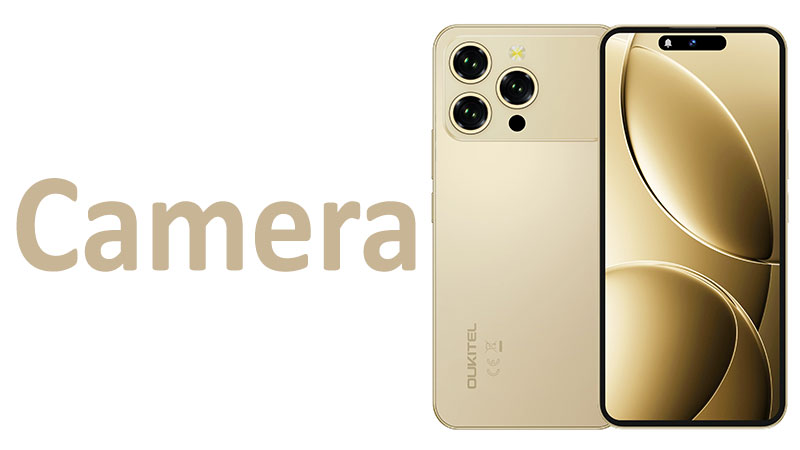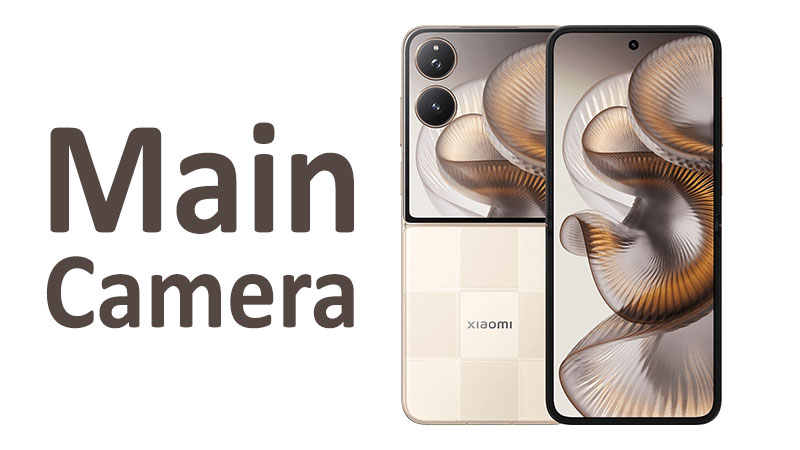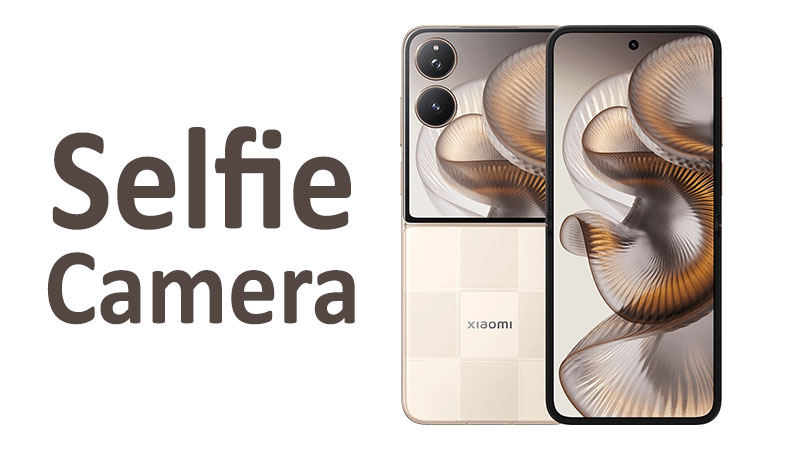The Oukitel P1 Pro camera system immediately stands out among its peers. Many potential buyers are now looking closely at its specifications and real-world performance. This comprehensive article dives deep into every aspect of this smartphone’s imaging capability. We will dissect the hardware, evaluate the software, and help you determine if the Oukitel P1 Pro delivers the photographic value you need. Our goal is to provide a complete guide for anyone considering this powerful budget device. Read on to explore the strengths and weaknesses of this unique camera offering.
A Comprehensive Review of the Oukitel P1 Pro Camera System
The Oukitel P1 Pro arrives with an ambitious triple-camera array on the rear. This setup aims to provide versatility for diverse shooting situations. It features a high-resolution 50MP main sensor. This is complemented by two auxiliary lenses for macro and depth effects. Consumers are increasingly demanding high-quality optics, even in budget-friendly models. Oukitel appears to have addressed this trend with aggressive hardware choices. The camera module is certainly the headline feature of the Oukitel P1 Pro. We will break down each component and assess its contribution to the overall user experience.
Technical Specifications: The Triple-Lens Array Detailed
Understanding the raw specifications is the first step in any camera review. The Oukitel P1 Pro uses three distinct lenses on its back panel. This configuration is common in today’s smartphone market. However, the specific components Oukitel chose are particularly noteworthy.
The 50MP Primary Wide Camera
The main camera carries the heaviest burden for image quality. It uses a 50 MP sensor with a bright f/1.9 aperture. The large 1/1.56-inch sensor size is a significant advantage. This size allows the sensor to capture much more light than smaller rivals. Light capture is crucial for both detail and low-light performance. This main lens also includes Phase Detection Autofocus, or PDAF. PDAF ensures quick and accurate focusing in varying conditions. This is a crucial feature for capturing fleeting moments. The sensor likely uses pixel-binning technology. This means it combines four pixels into one. The result is a brighter, sharper 12.5MP final image.
Specialized Comparison: This 1/1.56-inch sensor is notably larger than the 1/2.0-inch sensors found in some comparable mid-range phones. This bigger size suggests superior light gathering. It should translate directly into reduced image noise and better dynamic range. Compared to its direct predecessor, the sensor size represents a substantial technological leap. Oukitel clearly focused resources on this primary imaging component.
Auxiliary Lenses: Macro and Depth
The remaining two lenses serve specialized, supporting roles. They expand the creative options available to the user.
First, there is the 2 MP macro lens with an f/2.4 aperture. Macro lenses allow for extreme close-up photography. This lens lets users capture fine details of small subjects. Many budget phones include a macro lens. However, a 2MP resolution is quite low. It often results in images lacking significant detail. We will examine its performance closely in real-world scenarios.
Second, the camera includes a 0.3 MP depth sensor. This sensor’s job is purely to measure distance. It provides crucial spatial information to the camera’s software. This depth data is essential for creating portrait mode effects. These effects artificially blur the background, known as bokeh. The 0.3MP resolution is standard for a depth sensor. It simply provides data and does not capture image detail itself.
Daylight Photography Performance: Sharpness and Color
The true measure of any camera is its performance in optimal lighting. The Oukitel P1 Pro main camera excels when the sun is out. Its high-resolution sensor captures excellent detail. The resulting 12.5MP images are crisp and highly usable.
Clarity, Detail, and Color Accuracy
Daylight images from the Oukitel P1 Pro show strong characteristics. Sharpness is a major highlight thanks to the 50MP sensor. Fine textures, like leaves on a tree, retain good definition. The images demonstrate pleasing overall clarity.
Color reproduction is generally quite accurate. The camera leans towards a natural, slightly saturated look. This avoids the oversaturated colors seen in some competitor devices. Skin tones remain pleasingly natural. The white balance handles typical daylight well. You can expect vibrant yet realistic colors in most outdoor shots.
HDR Capability and Dynamic Range
High Dynamic Range (HDR) is essential for modern smartphone photography. It helps balance light in scenes with both bright and dark areas. The Oukitel P1 Pro includes an HDR feature. This is necessary for challenging high-contrast environments.
The HDR mode performs adequately. It successfully recovers highlight details, such as bright clouds. It also lifts shadow areas to reveal hidden information. The overall dynamic range is respectable for a phone in this price segment. However, complex scenes can sometimes push the limits of the software. Intense backlighting may still result in some clipped highlights. It is important to remember this limitation.
Important Point for Buyers: Users should always activate the HDR mode for midday outdoor photos. It consistently improves the depth and balance of the final image.
Low-Light and Night Photography Assessment
Low-light photography separates capable cameras from average ones. The Oukitel P1 Pro relies heavily on its large 1/1.56-inch sensor here. A larger sensor inherently gathers more light. This helps to reduce the need for aggressive post-processing.
Noise Reduction and Image Brightness
The camera’s performance after dark is commendable for a budget device. Low-light photos are relatively bright and well-exposed. The f/1.9 aperture is reasonably wide. This allows a decent amount of light onto the sensor. The camera software employs effective noise reduction algorithms. These algorithms work to smooth out graininess.
However, a trade-off exists between detail and noise. Aggressive noise reduction can sometimes smear fine details. This is noticeable when pixel-peeping dimly lit scenes. The camera does not appear to have an advanced, dedicated Night Mode. This means it relies mostly on the hardware and standard processing. Expect decent results, but not the clean, bright images produced by high-end flagships.
Specialized Comparison: Night Performance
Many competitor phones utilize computational photography for night shots. They often stack multiple images to create one bright final photo. The Oukitel P1 Pro appears to use a simpler method. Consequently, high-end rivals will outperform it in extremely dark situations. The P1 Pro shines when some ambient light is available, like streetlights.
Video Recording Capabilities and Quality
The Oukitel P1 Pro offers versatility in its video recording formats. It can capture high-definition footage up to 4K resolution at 30 frames per second. It also supports the more common 1080p resolution at 30fps.
4K and 1080p Video: Detail and Stabilization
The 4K video footage is noticeably sharp. It captures a good level of detail in bright conditions. This high resolution is excellent for future-proofing your recordings. However, the camera lacks Optical Image Stabilization (OIS). This is a common omission in budget phones. All stabilization relies on electronic methods (EIS). EIS can introduce minor cropping and subtle warping. It is best to use a tripod or ensure steady hands for the best 4K results.
The 1080p video provides a more stable experience. The electronic stabilization generally performs better at this lower resolution. For casual social media sharing, 1080p is more than sufficient. Overall video quality is impressive for a device at this price point. It is a substantial tool for basic video capture.
Audio Capture Quality
Often overlooked, video audio quality is vital. The Oukitel P1 Pro’s built-in microphone captures clear sound. Dialogue is easy to understand in quiet environments. However, wind noise can be an issue outdoors. The microphone system captures decent audio for everyday video clips. It will not replace dedicated professional recording equipment.
Exploring the Auxiliary Lenses in Depth
The two secondary lenses offer additional creative avenues for users. Their utility, however, is more specialized than the main camera.
The 2MP Macro Lens: Closer Look
The 2MP macro lens allows for getting extremely close to subjects. This can capture fascinating, highly magnified views of tiny objects. The fixed focus nature of this lens demands precise distance placement. You must hold the phone just a few centimeters from the subject.
The biggest limitation is the 2-megapixel resolution. Macro shots often lack the necessary fine detail to be useful for large prints. They are best suited for smaller social media posts. The macro lens is a fun addition, but it is not a tool for serious, detailed close-up work.
The 0.3MP Depth Sensor: Portrait Mode Assessment
The 0.3MP depth sensor aids in the creation of portrait mode images. Portrait mode uses software to isolate the subject. It then applies a realistic-looking background blur. This effect is aesthetically pleasing and popular.
The P1 Pro handles background separation reasonably well. The software accurately detects the edges of the subject most of the time. Small errors can occur around hair or complex shapes. This is typical for most depth-sensing solutions. The resulting bokeh effect looks smooth and attractive. The depth sensor fulfills its role effectively, producing good portrait shots.
The 32MP High-Resolution Selfie Camera
The front-facing camera on the Oukitel P1 Pro is designed for high-resolution self-portraits. It features a large 32 MP sensor with an f/2.2 aperture. It also uses a 1/2.74-inch sensor size.
Specs and Self-Portrait Detail
The 32MP resolution results in highly detailed selfies. This is especially true in bright daylight. The images are very sharp and vibrant. This is a significant advantage for social media content creation. The wide aperture helps in slightly darker indoor settings. It allows the camera to gather more available light. The selfies maintain good exposure and flattering colors.
The front camera is capable of shooting 1080p video at 30fps. This is perfect for video calls, vlogging, and live streaming. The quality is clear and stable enough for these applications.
Specialized Comparison: A 32MP front camera is impressive, even when compared to flagships. Many high-end phones still use 10MP or 12MP selfie cameras. The P1 Pro sacrifices autofocus on the front camera. However, it gains pixel density. This makes it highly competitive in the front camera megapixel race.
Camera Interface, Software, and Features
A powerful sensor requires good software to operate it effectively. The Oukitel P1 Pro’s camera application is straightforward and user-friendly. It offers the essential modes most users need.
Camera Interface and Shooting Modes
The camera interface is clean and uncluttered. Switching between photo, video, and portrait mode is simple. Essential controls are easily accessible on the main screen. The app includes standard features like LED flash control and a digital zoom function.
Two key features are included in the P1 Pro:
- Panorama: This mode allows users to stitch together multiple images. It creates a single, super-wide panoramic photo. The stitching quality is solid.
- HDR: As discussed, this mode helps manage dynamic range in tricky light.
The camera app operates quickly. There is minimal shutter lag in good lighting. This provides a pleasant and responsive shooting experience.
Speed, Processing, and User Experience
The overall speed of image capture is fast. Clicking the shutter instantly takes the photo. However, the post-processing phase takes a moment. This is especially true when shooting full 50MP images or using HDR. The phone’s processor needs time to handle the large image files.
This short processing delay is a necessary trade-off for image quality. It ensures the software applies the necessary noise reduction and sharpening. The overall user experience is positive. The app is stable and generally reliable.
Pros, Cons, and Essential Advice for Buyers
The Oukitel P1 Pro camera is a mixed bag of flagship-level specs and budget compromises. It is important to weigh the pros and cons clearly. This will help prospective buyers set realistic expectations.
Oukitel P1 Pro Camera Pros
The system offers several notable advantages over its competition. These strengths make it a compelling choice for many users.
- High-Resolution Main Sensor: The 50MP primary lens captures excellent detail. This is a huge benefit for general photography.
- Large Sensor Size: The 1/1.56-inch sensor is great for light collection. It aids performance in both day and low light.
- Fast Autofocus: PDAF ensures quick and reliable focusing. This is helpful for moving subjects.
- Excellent Selfie Camera: The 32MP front camera delivers very sharp self-portraits. It is a major highlight for selfie enthusiasts.
- 4K Video Recording: The option to shoot high-resolution 4K video is a modern necessity.
Oukitel P1 Pro Camera Cons
The budget nature of the phone shows in some key compromises. These are worth noting before making a purchase.
- Limited Auxiliary Lenses: The 2MP macro and 0.3MP depth sensors are basic additions. They offer limited utility.
- No Optical Image Stabilization (OIS): The absence of OIS means video footage is less smooth. Steady hands are essential for sharp results.
- Basic Night Mode: The phone lacks an advanced computational night mode. This limits its ability in very dark scenarios.
- Processing Delay: Saving high-resolution photos can cause a brief lag in the camera app.
Essential Advice for Buyers
Potential buyers must manage their expectations. The Oukitel P1 Pro camera system provides phenomenal value for the money. However, it cannot beat high-end flagship phones costing four times as much.
Here are three important takeaways for buyers:
- Prioritize the Main Camera: Buy this phone if your focus is on the 50MP main lens. It delivers fantastic quality in good light.
- Use It for Casual Video: The 4K video is fine, but remember the lack of OIS. For smooth, professional-grade video, you will need a gimbal.
- Set Realistic Macro Expectations: View the 2MP macro lens as a fun novelty. Do not expect highly detailed professional close-ups from it.
The camera provides a strong foundation for everyday photography. It is an excellent choice for a budget-conscious user. It punches well above its weight in its price class.
Conclusion
The Oukitel P1 Pro camera system presents a very compelling proposition. It successfully blends high-end specifications with a low barrier to entry. The star of the show is undeniably the 50MP main camera. Its large sensor captures sharp, vibrant images in daylight. The included PDAF ensures users rarely miss a shot due to slow focusing. The 32MP front-facing camera also exceeds expectations. It provides exceptional quality for selfies and video calls.
However, the phone is not without its compromises. The supporting macro and depth lenses feel more like checklist items than truly useful tools. The lack of OIS requires careful shooting, especially during video recording. Low-light performance is decent but falls short of flagship computational photography. Overall, the Oukitel P1 Pro camera is an outstanding choice for its price point. It offers excellent core image quality where it matters most: the main and selfie cameras. This phone is highly recommended for users seeking the best photographic value on a limited budget.
FAQ
Is the Oukitel P1 Pro camera good for low-light photos?
The Oukitel P1 Pro performs reasonably well in low light. This is thanks to its large main sensor. However, it lacks an advanced computational night mode.
Does the Oukitel P1 Pro have Optical Image Stabilization (OIS)?
No, the Oukitel P1 Pro does not feature OIS. Video stabilization relies on Electronic Image Stabilization (EIS). This is standard for phones in this category.
What is the primary sensor resolution?
The Oukitel P1 Pro features a high-resolution 50 MP primary wide-angle camera. It has a bright f/1.9 aperture.
What is the resolution of the selfie camera?
The front-facing selfie camera on the Oukitel P1 Pro boasts a 32 MP sensor. It captures high-detail self-portraits.
Can the Oukitel P1 Pro record 4K video?
Yes, the phone supports 4K video recording at 30 frames per second. It also offers 1080p recording at the same frame rate.



